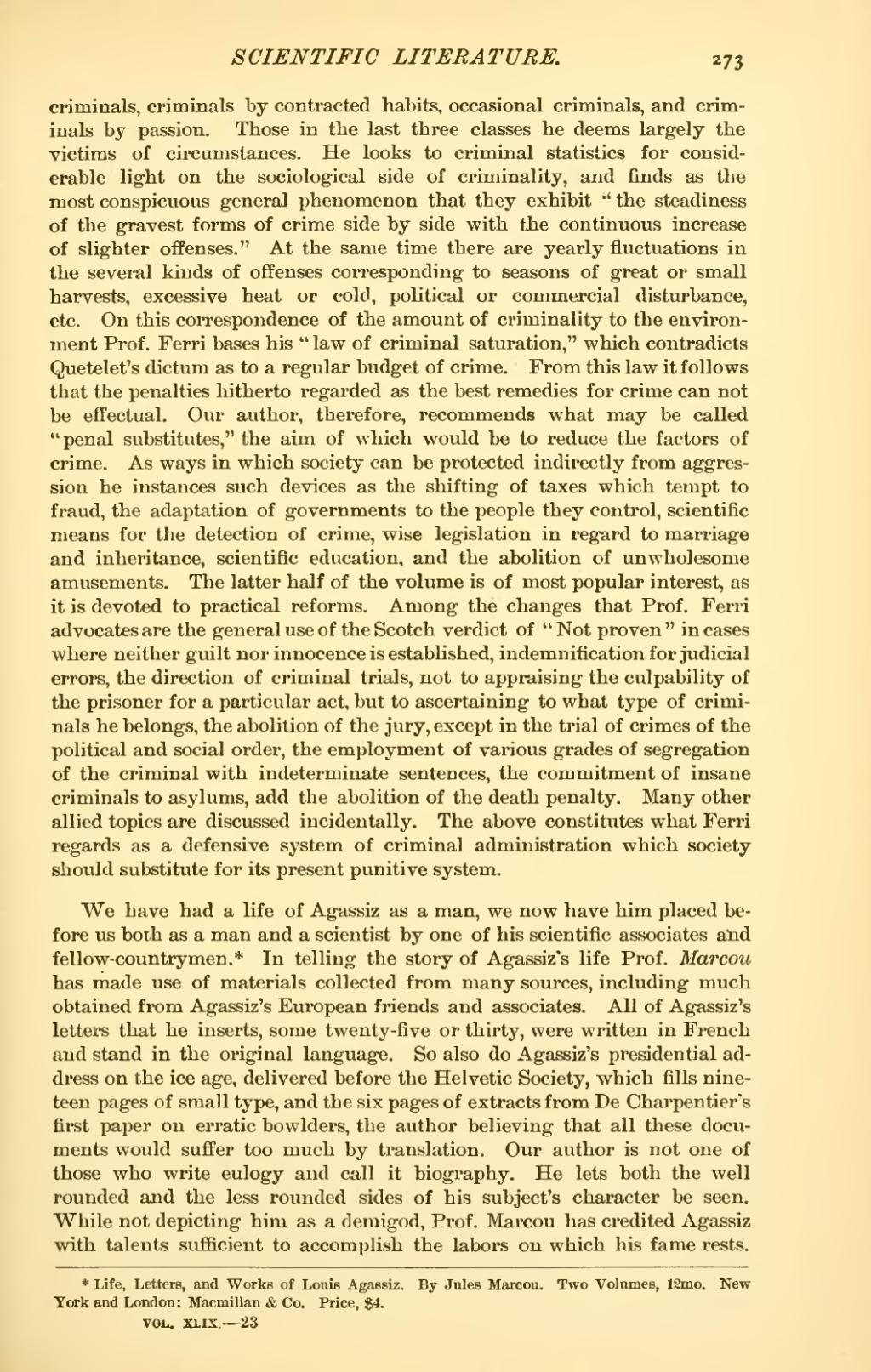criminals, criminals by contracted habits, occasional criminals, and criminals by passion. Those in the last three classes he deems largely the victims of circumstances. He looks to criminal statistics for considerable light on the sociological side of criminality, and finds as the most conspicuous general phenomenon that they exhibit "the steadiness of the gravest forms of crime side by side with the continuous increase of slighter offenses." At the same time there are yearly fluctuations in the several kinds of offenses corresponding to seasons of great or small harvests, excessive heat or cold, political or commercial disturbance, etc. On this correspondence of the amount of criminality to the environment Prof. Ferri bases his "law of criminal saturation," which contradicts Quetelet's dictum as to a regular budget of crime. From this law it follows that the penalties hitherto regarded as the best remedies for crime can not be effectual. Our author, therefore, recommends what may be called "penal substitutes," the aim of which would be to reduce the factors of crime. As ways in which society can be protected indirectly from aggression he instances such devices as the shifting of taxes which tempt to fraud, the adaptation of governments to the people they control, scientific means for the detection of crime, wise legislation in regard to marriage and inheritance, scientific education, and the abolition of unwholesome amusements. The latter half of the volume is of most popular interest, as it is devoted to practical reforms. Among the changes that Prof. Ferri advocates are the general use of the Scotch verdict of "Not proven" incases where neither guilt nor innocence is established, indemnification for judicial errors, the direction of criminal trials, not to appraising the culpability of the prisoner for a particular act, but to ascertaining to what type of criminals he belongs, the abolition of the jury, except in the trial of crimes of the political and social order, the employment of various grades of segregation of the criminal with indeterminate sentences, the commitment of insane criminals to asylums, add the abolition of the death penalty. Many other allied topics are discussed incidentally. The above constitutes what Ferri regards as a defensive system of criminal administration which society should substitute for its present punitive system.
We have had a life of Agassiz as a man, we now have him placed before us both as a man and a scientist by one of his scientific associates and fellow-countrymen.[1] In telling the story of Agassiz's life Prof. Marcou has made use of materials collected from many sources, including much obtained from Agassiz's European friends and associates. All of Agassiz's letters that he inserts, some twenty-five or thirty, were written in Fi'ench and stand in the original language. So also do Agassiz's presidential address on the ice age, delivered before the Helvetic Society, which fills nineteen pages of small type, and the six pages of extracts from De Charpentier's first paper on erratic bowlders, the author believing that all these documents would suffer too much by translation. Our author is not one of those who write eulogy and call it biography. He lets both the well rounded and the less rounded sides of his subject's character be seen. While not depicting him as a demigod, Prof. Marcou has credited Agassiz with talents sufficient to accomplish the labors on which his fame rests.
- ↑ Life, Letters, and Works of Louis Agassiz. By Jules Marcou. Two Volumes, 12mo. New York and London: Macmillan & Co. Price, $4.
